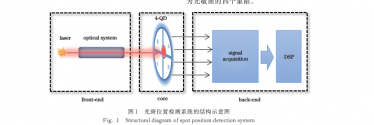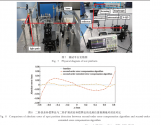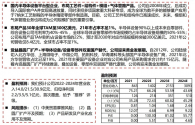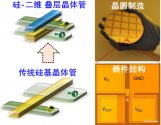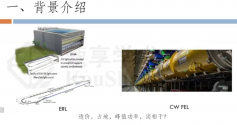Currently, the laser induced plasma(LPP) technology is the best method to obtain high quality extreme ultraviolet(EUV)light source, whereby a high-powering-frequency,short-pulse CO2 laser under the main oscillation power amplification technology is used to bombard a droplet tin target to obtain high-quality extreme ultraviolet signals. In an EUV lithography light source system, the laser beam direction is significantly affected by the cascade when the laser beam passes through the four-stage amplification system. During the amplification process, the optical components in the optical path between the amplifiers feature different thermal distortions under different laser powers; all the four-stage amplifiers used are high-power laser amplifiers, and the vibrations caused by the cooling device during operation are unavoidable. These factors cause the center of the laser beam to deviate from the optical axis and affect the EUV conversion efficiency. Therefore, for EUV lithography light source systems, the further research on beam pointing stability is necessary to achieve a certain EUV conversion efficiency. At present, four-quadrant detectors are widely used in high-precision laser measurements owing to their fast response,high position revolutionizing measurement accuracy, and simple data processing.However,a high-precision spot location algorithm based on a four-quadrant detector is generally complex.Thus,during high-repetition-frequency pulse signal detection, the real-time requirements of spot location calculations cannot be met.Therefore,it is necessary to develop a new algorithm that considers the accuracy of spot location detection and its real-time performance.
In this studied first obtain the four-quadrant detector output signal under the Gaussian distribution model for spot energy distribution and subsequently calculate the initial solution for the spot position under the influence of the detector radius and dead zone using the normalization and difference algorithm. The initial spot position solution is a transcendental equation, and its analytical solution cannot be derived using a mathematical method. The expression for the actual position of the spot centroid is then obtained using the approximate decomposition method, which compensates for the influence of the spot radius, detector radius, and dead zone width on the actual position of the spot centroid. Finalist improve the solution accuracy correction factor is established, and the error characteristics of the correction factor are used to correct the actual position of the spot. This can help improve the spot position detection accuracy and detection range, without increasing the complexity of the algorithm. According to the detection principle of the four-quadrant detector, electrical signals from the four quadrants of the detector should be obtained simultaneously; if the acquisition of the electrical signals from each quadrant is not synchronized, the accuracy of the spot position solution is affected.Therefore,a multi-channel synchronous acquisition and processing circuit is designed for the acquisition of detector output signals ensure the accuracy and real-time acquisition of the signals.
According to the analysis of the simulation results, the root mean square error of the second-order error compensation algorithm is 0.0115;after improvement, the root mean square error is reduced to 0.003,which is 73.91% lower. The maximum error of the second-order error compensation algorithm is 0.0372 mm; after improvement, the maximum error is reduced to 0.0076 mm, which is 79.56% lower, and the absolute error is less than 0.005 mm.The detection range of the spot position is expanded from -0.12 mm≤
x≤0.12 mm to -0.59 mm≤
x≤0.59 mm, which is approximately five times larger. The average absolute error value in the absolute error range of less than 0.005 mm is reduced from 0.0025 mm to 0.0019 mm, which is approximately 24% lower(Fig.4). The spot position detection results are analyzed. It is shown that the root mean square error of the second-order error compensation algorithm is 0.0248, and the root mean square error of the second-order extended error compensation algorithm is 0.0042,i.e.,a reduction of 83.06%. The maximum absolute error of the second-order error compensation algorithm is 0.0625 mm, and the maximum absolute error of the second-order extended error compensation algorithm is 0.0092 mm, i.e., a reduction of 85.28%. The average absolute error of the second-order error compensation algorithm is 0.0206 mm, and the average absolute error of the second-order extended error compensation algorithm is 0.0034 mm, a reduction of approximately 83.50%. Notably, the spot position detection accuracy is better than 19 μrad in the detection range of -0.5 mm≤
x≤0.5 mm(Fig.8).
The simulation analysis and experimental results reveal that the detection range of the second-order extended error compensation algorithm is considerably larger than that of the second-order error compensation algorithm under the same detection accuracy. Compared with the traditional polynomial algorithm, the second-order extended error compensation algorithm offers clear advantages and practicability, significantly improving the detection accuracy of the spot position over a wide detection range. Based on the abovementioned discussion, the results of this work are expected to help realize the wide-range ,real-time, and high-precision detection of the spot position for an ultraviolet lithography source driven by a high-repetition-frequency narrow-pulse CO2 laser.
